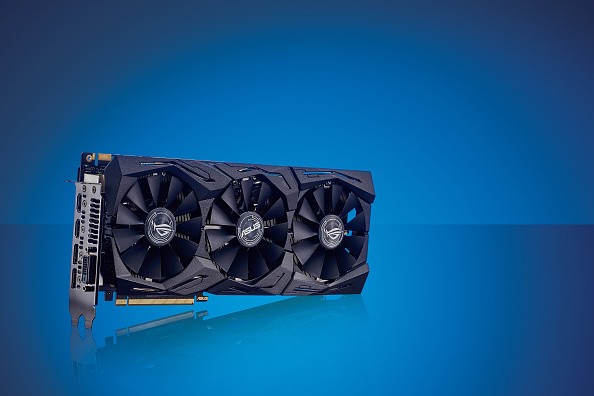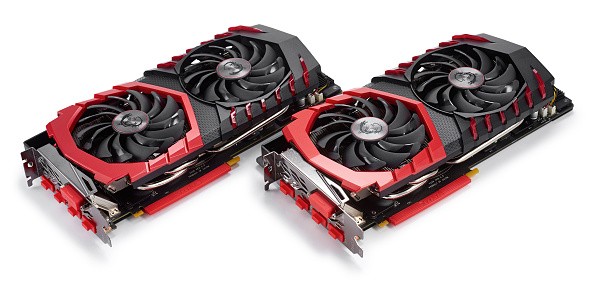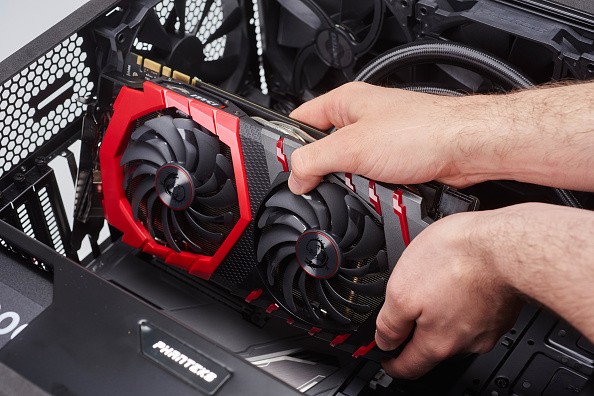Graphics card buying guides out there are a dime a dozen, and they'll often tell you the same things: which ones are best for this resolution, which ones have the best price-performance ratio, etc. But that's the boring stuff. That's basic smart buying. If you truly want to get the most out of your next graphics card purchase, you need to understand the actual tech that goes into it.

An Asus ROG Strix GTX 1070 Ti A8G Gaming graphics card, taken on November 14, 2017.
In this guide, you will learn about the different graphics card tech specifications: what they mean, what's their purpose, and which ones should matter when you go out and buy a new part. After this guide, you'll be a more knowledgeable buyer, and that's a guarantee.
Graphics Card Specs 101: The Most CRITICAL
According to PC Gamer, you should be aware of nine integral graphics card tech specs, but only a handful of them matter when buying. Here are the most important ones:
VRAM/Memory amount: VRAM stands for Video RAM, and this specification refers to the amount of memory that a graphics card has. Think of an entire graphics card as a mini-computer whose sole purpose is to render 3D graphics on your PC. And that computer always has to have enough memory.
VRAM amounts change with almost every new generation of products from NVIDIA and AMD. For the modern generation, you'll want to have at least 6 GB of VRAM. 4 GB could be the absolute bare minimum, but going below that is not recommended for most games that came out within the past five to six years.
Power connectors: You would not want to buy a graphics card that asks for power connectors that your PSU doesn't have. These connectors vary among card tiers, but they often come in 6-pin or 8-pin configurations.
Low-power consumption models tend only to have one 6-pin or 8-pin connector, or none at all. High-power ones would require multiple 6-pins or even multiple 8-pins, or a combination of the two. A good example would be the top-end Sapphire RX 6900 XT TOXIC from AMD, which uses one 6-pin and two 8-pin connectors. Before you buy a card, take a look at your PSU if it has the right cables.

A pair of MSI GTX 1080 Gaming X graphics cards, taken on October 6, 2016.
TDP: TDP stands for Thermal Design Power. Technically, it only measures the amount of heat in watts, but it also gives you an idea of how much power the card uses at out-of-the-box speeds. TDP is an extremely critical spec because it tells you if your power supply would be able to give it enough juice. But of course, you also need to consider how much power your CPU, RAM, and storage drives are consuming.
Display output ports: Modern graphics cards often have HDMI, DisplayPort, and sometimes even the now-antiquated DVI. Before buying a new graphics card, you need to consider what port your monitor or TV has. Otherwise, your new purchase would be rendered useless until you upgrade your monitor or buy a hard-to-find cable adapter.
Read also: NVIDIA RTX 3090 Super Rumored: 10,572 CUDA Cores, 400W+ TDP
Graphics Card Specs That Are Important, But Not Really Critical
Form factor: This specification is important because you'll always want a card that fits inside your case. While there aren't form factor names like in PC cases, you can see the card's length, height, and thickness in its official spec sheet. Match those measurements with the max supported graphics card size of your case to ensure that it fits.

Detail of a person installing a MSI GeForce GTX 1070 Gaming X graphics card into a custom-built gaming PC, taken on June 9, 2016.
Clock speed: This refers to the actual speed of the GPU chip in the graphics card, measured in megahertz (MHz). But it doesn't always mean the card with the highest clock speed is the fastest of them all. For example, two cards with the same GPU (say, an RTX 2060) will have different clock speeds out of the box. Obviously, cards with different GPUs will also perform differently regardless of clock speed (i.e. an RTX 2080 with a very high clock speed is never going to outperform an RTX 3080).
CUDA Cores/Stream Processors: CUDA is an NVIDIA trademark, while Stream Processors are AMD's. The only way that CUDA Core or Stream Processor count matters is if you compare two graphics cards of the same series/architecture (say, an RTX 3070 and an RTX 3080, which are both from the Turing architecture).
Generally, the more CUDA Cores/SPs, the faster a GPU is. But then again, it won't matter if you compare a high CUDA Core-count model from an old generation to a lower CUDA Core-count model from the latest generation because the architectures and performance are way different. The same thing goes for AMD SPs.
Memory bandwidth: Generally, the faster the memory bandwidth, the faster a card is. This is indicated by the GDDR (Graphics Double Data Rate) spec, according to BinaryTides. With every succeeding GDDR generation, memory bandwidth increases. What you'll always want for a gaming PC is a graphics card with at least GDDR5 VRAM. Then, in ascending order, bandwidth increases as you go up to GDDR5X, GDDR6, and GDDR6X. The last three are the more modern ones.
A perfect example would be an NVIDIA GTX 1650, which features two models with GDDR6 and GDDR5 VRAM. The GDDR6 model will always be faster than the one with GDDR5, all because of the improved memory bandwidth.
Related: AMD Is Losing More GPU Market Share to NVIDIA; RDNA2 Refresh Teased
This article is owned by Tech Times
Written by RJ Pierce













